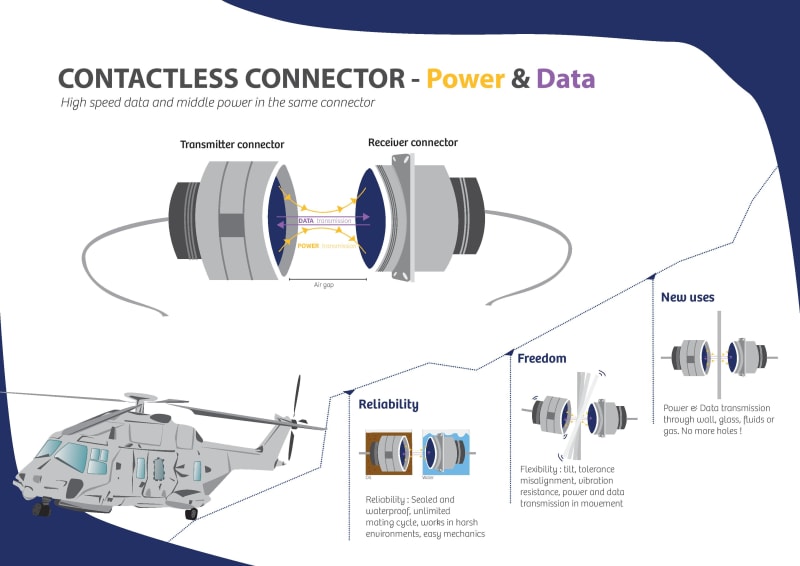Contactless connector for power and data transmission
In order to facilitate the integration of electrical systems, we have developed a contactless connector for high-speed power and data transmission, and for harsh environments in particular.

Benefits
- More resistant to harsh environments
- Removes physical and wire constraints
- New perspectives of integration (through wall, rotary system)
- Improves and reduces maintenance operations
- Simplifies and optimizes interconnection (wear, connection/disconnection cycle)
- Freedom of movement (misalignment, vibration...)
Issue
Connectors are used extensively to enable the transmission of data or power to different electrical systems.
However, current connectors with physical interconnections limit the integration of these electrical systems.
Indeed, to install connectors, holes are often required to pass cables to supply power to sensors or other embedded systems. Maintaining the tightness and hermeticity of these systems is complex.
In addition, once installed, the open physical contact is subject to contact corrosion induced by repeated movements, vibrations and rotations, which greatly reduces the reliability of the connectors and increases maintenance operations.
In the case of applications with specific ejection technologies using physical and wired contacts, the cables can get detached, resulting in subsequent system failure and non-use of the equipment.
In other cases, systems are subject to particular environmental constraints (humidity, dirt and salt spray) that accelerate wear. Currently, plugs or complex mechanics offer solutions, but they are very expensive.
Solution
We are developing a new generation of connectors for contactless power and data transmission that are resistant to harsh environments.
This new type of connector solves the problems mentioned above. First of all, it facilitates the integration of electrical systems by enabling high-speed power and data transmission through non-metallic surfaces, gas or fluids. This eliminates the need to drill holes in the walls for cable entry, opening up new possibilities for use and integration.
Secondly, there is no risk of tearing off the connectors since there is no physical or wired contact.
Finally, as the connector is galvanically isolated, hermetically sealed and waterproof, energy and data transmissions are ensured in harsh environments. Therefore, it is an alternative to connectors with contact, which require special, costly measures and additional maintenance.